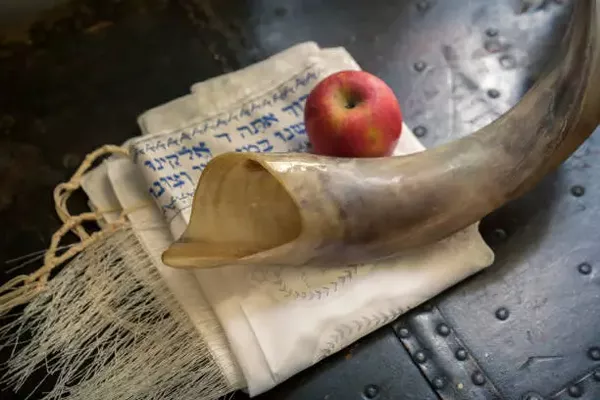Rosh Hashanah, the Jewish New Year, is a significant holiday in the Jewish calendar, marking the beginning of the High Holy Days. It is a time for reflection, prayer, and renewal. Understanding when Rosh Hashanah begins and ends is essential for those observing the holiday. This article provides a comprehensive overview of Rosh Hashanah, including its traditions, significance, and specific dates.
Understanding Rosh Hashanah
Rosh Hashanah, which translates to “Head of the Year” in Hebrew, is celebrated on the first and second days of the Hebrew month of Tishrei. This typically falls in September or early October, depending on the lunar calendar. Rosh Hashanah is one of the holiest days in Judaism and initiates the Ten Days of Awe, a period of introspection and repentance that culminates in Yom Kippur, the Day of Atonement.
The holiday is observed with various customs and rituals, including the blowing of the shofar (a ram’s horn), special prayers, and festive meals. It serves as a time to reflect on the past year, seek forgiveness, and set intentions for the year ahead.
When Does Rosh Hashanah Begin and End?
The exact dates of Rosh Hashanah vary each year due to the differences between the Jewish lunar calendar and the Gregorian solar calendar. Rosh Hashanah begins at sunset and continues until nightfall on the following day, lasting for about 25 hours.
Key Dates for Rosh Hashanah in Upcoming Years
To help clarify when Rosh Hashanah occurs, here are the dates for the next several years:
2024: Rosh Hashanah begins at sunset on October 2 and ends at nightfall on October 4.
2025: Rosh Hashanah begins at sunset on September 22 and ends at nightfall on September 24.
2026: Rosh Hashanah begins at sunset on September 11 and ends at nightfall on September 13.
2027: Rosh Hashanah begins at sunset on September 1 and ends at nightfall on September 3.
These dates are essential for planning celebrations, religious observances, and communal gatherings.
Rosh Hashanah Traditions and Practices
Rosh Hashanah is rich in traditions and customs that enhance the spiritual experience of the holiday. Understanding these practices can deepen one’s appreciation of the holiday’s significance.
1. The Shofar
The shofar, traditionally made from a ram’s horn, is blown during Rosh Hashanah services. Its sound serves as a call to repentance and is a reminder of the biblical commandment to observe the holiday. The shofar is blown in specific patterns: teki’ah (a long blast), shevarim (three short blasts), and teru’ah (nine staccato blasts). This ritual is a vital part of the celebration and resonates deeply within the Jewish community.
2. Special Prayers and Services
During Rosh Hashanah, additional prayers are recited, including the Musaf service, which is unique to this holiday. The Unetanneh Tokef prayer, which speaks of the divine judgment that takes place during the High Holy Days, is also recited. The atmosphere in synagogues is typically solemn, emphasizing introspection and the search for forgiveness.
3. Festive Meals
Rosh Hashanah meals are often celebratory and include symbolic foods. Common foods include apples dipped in honey, which represent the hope for a sweet new year, and challah bread, often shaped in a round loaf to symbolize the cycle of the year. Pomegranate seeds, representing abundance and good deeds, are also commonly served.
4. Tashlich
The Tashlich ceremony involves casting off one’s sins by throwing pieces of bread into a body of flowing water. This ritual is often performed on the afternoon of the first day of Rosh Hashanah. It symbolizes the desire to rid oneself of transgressions and start anew.
Significance of Rosh Hashanah
Rosh Hashanah holds profound significance in Jewish tradition. It is not only a time for personal reflection but also a communal celebration of faith, hope, and renewal.
1. Reflection and Repentance
Rosh Hashanah serves as an opportunity for self-assessment. Individuals reflect on their actions in the past year, seeking forgiveness from those they may have wronged. This act of atonement is crucial for personal growth and is a significant aspect of the High Holy Days.
2. A Time for Renewal
As the Jewish New Year, Rosh Hashanah symbolizes new beginnings. It encourages individuals to set goals and aspirations for the upcoming year, fostering a sense of optimism and hope. This theme of renewal resonates deeply within the Jewish community and is often expressed in prayers and rituals.
3. The High Holy Days
Rosh Hashanah marks the beginning of the Ten Days of Awe, a period that culminates in Yom Kippur. This time is designated for introspection, prayer, and the seeking of forgiveness. The relationship between Rosh Hashanah and Yom Kippur emphasizes the importance of repentance in the Jewish faith.
See also: Who Created Notting Hill Carnival?
Conclusion
Rosh Hashanah is a pivotal holiday in the Jewish calendar, marking the beginning of a new year filled with reflection, repentance, and renewal. Understanding when Rosh Hashanah begins and ends is crucial for those observing the holiday. As the holiday approaches, it serves as a reminder to engage in self-assessment, seek forgiveness, and set intentions for the year ahead.
Whether through the sounding of the shofar, the sharing of festive meals, or the practice of Tashlich, Rosh Hashanah invites individuals to embrace the values of hope, community, and spiritual growth. As one reflects on the past year and looks toward the future, the message of Rosh Hashanah resonates deeply within the hearts of those who observe it.
Related topics:
When Is Pancake Day Every Year?

